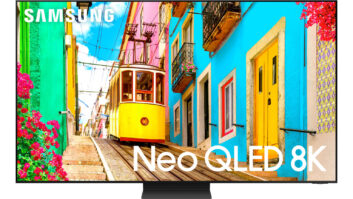New York — Vizio ascended to the top of the flat-panel market share ranks in the second quarter of 2007, according to two separate TV market research reports released Monday.
Austin, Texas-based DisplaySearch said the young flat-panel brand with predominately U.S. financial backing used its unusually focused retail distribution strategy and aggressive pricing to out sell all other brands in combined LCD TV and plasma sales during the period. El Segundo, Calif.-based iSuppli also showed Vizio holding the marketshare lead in LCD TV unit sales.
According to The NPD Group company DisplaySearch’s “Quarterly Global TV Shipment and Forecast Report,” “one of the biggest surprises” in the second quarter was Vizio’s shakeup of the flat-panel TV rankings.
The brand, which has only been in the TV market since mid-2003, became the No. 1 LCD TV brand for the first time, rising from No. 4 in Q1 2007 to No. 1 in Q2 2007 on more than 70 percent quarter-to-quarter and 400 percent year-to-year unit growth, overtaking Samsung.
Combined with its plasma performance — DisplaySearch had Vizio pegged at No. 4 in plasma in the quarter — Vizio led all brands in overall flat-panel sales with 11.9 percent share, up its 8.8 percent position in the previous quarter, DisplaySearch said. Growth for the year-to-year period was said to 340 percent.
Similarly, iSuppli said Vizio became the leading LCD TV brand in North America in the second quarter of 2007, shipping 606,402 LCD TVs, up 76.4 percent from 343,704 in the first quarter.
“This caused Vizio’s North American unit market share to rise to 14.5 percent, up from 9.4 percent in the first quarter,” iSuppli said.
The sales surge also caused Vizio to rise four positions in the North American rankings, going from the fifth spot in the first quarter to No. 1 in the second quarter — passing Samsung, Philips, Sharp and Sony on the way.
iSuppli attributed the success to “a combination of low-priced products and high-powered sales channels.”
“Vizio’s success is mainly due to the company expanding its retail presence to Wal-Mart and Sears at the beginning of the second quarter,” said Riddhi Patel, television systems principal analyst for iSuppli. “The company already was selling its LCD TVs through the warehouse stores Costco, Sam’s Club and BJ’s Wholesale Club — but the addition of the two new retailers gave Vizio’s sales a significant lift.”
Vizio also is benefiting from U.S. consumers’ increased awareness and comfort with LCD TVs. In the past, because of the newness of the product, U.S. consumers gravitated toward premium, established brands and specialty electronics retailers. Vizio’s success selling inexpensive LCD TV sets through mass-market retailers reflects a major shift in consumer attitudes.
Ross Young, DisplaySearch president attributed Vizio’s success to its “warehouse club channel focus and lack of channel conflicts, which enabled the company to get to disruptive price points which helped fuel the rapid rise of the warehouse club channel in the U.S. TV market and caused its shipments to surge.”
“In addition, Vizio’s successful expansion outside of the club channel to Circuit City, Sears and Wal-Mart while maintaining its attractive price points further boosted its growth and enabled the company to earn the No. 1 ranking in the North American flat-panel TV market,” he continued.
Meanwhile, the market research firm reported that in North American LCD TV unit sales Sharp remained No. 3, Funai jumped from No. 6 to No. 4 and Polaroid rose from No. 11 to No. 5 on new distribution at Wal-Mart.
While Samsung didn’t earn the No.1 position in North American LCD TV units, it was No. 1 overall in North American TV sales on both a unit and revenue basis, which resulted in part from to its No. 2 position in LCD and plasma TVs and No. 1 position in MD RPTVs.
Samsung overtook Sony in microdisplay rear projection (MD-RPTVs) after trailing Sony for the past 10 consecutive quarters as both Sony’s 3LCD and SXRD product lines experienced year-to-year and quarter-to-quarter declines, DisplaySearch said.
In other news, DisplaySearch noted a 5 percent year-to-year unit decline and flat revenue results in the overall North American TV market during the period.
Only LCD TVs enjoyed unit and revenue growth and the growth was not sufficient to offset weakness in all other technologies.
Weakness was also seen in the 50-inch plus category which was down 24 percent quarter-to-quarter and 7 percent year to year as consumers become more seasonal in their big-screen TV purchases, trade larger sizes for smaller sizes, thinner form factors and higher resolutions and wait for 50 inch-plus flat-panel TV prices to fall, according to DisplaySearch.
While 50 inch plus declined, 40-inch to 49-inch surged with shipments up 8 percent quarter-to-quarter and 49 percent year-to-year.
1080p units in this category jumped 32 percent quarter-to-quarter and 139 percent year-to-year and the flat panel TV share at 40- to 49-inch surged from 85 percent in Q2 2006, to 98 percent in Q2 2007, DisplaySearch revealed.
At 50-inch-plus, the flat-panel TV share exceeded 50 percent for the first time at 58 percent, up from 32 percent one year ago, on weakness in 3LCD, LCoS and CRT rear-projection TVs.
DisplaySearch Q1’07 – Q2’07 North American LCD TV Unit Rankings and Growth
DisplaySearch Q1’07 – Q2’07 North American Flat-Panel TV Unit Rankings and Growth
DisplaySearch Q1’07 – Q2’07 North American MD-RPTV Unit Rankings and Growth
DisplaySearch Q1’07 – Q2’07 North American TV Unit Rankings and Growth
DisplaySearch Q1’07 – Q2’07 North American TV Revenue Rankings and Growth













